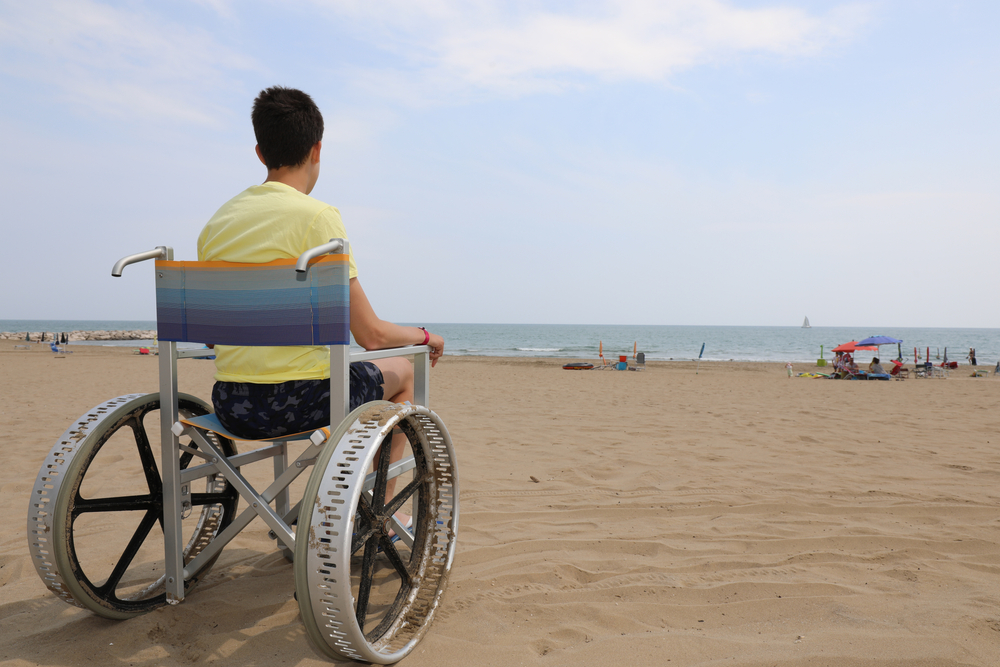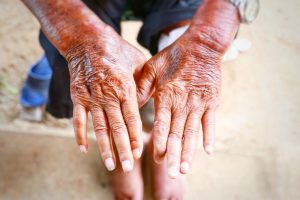In 2023, understanding ALS has never been more crucial, especially given its increasing prevalence.
New diagnostic measures, combined with emerging treatments, paint a hopeful picture for those battling Amyotrophic Lateral Sclerosis (ALS).
ALS, also known as Lou Gehrig’s disease, is a progressive neurodegenerative disorder affecting motor neurons in the brain and spinal cord.
What is ALS?
ALS is a specific disorder that targets the nerve cells responsible for controlling our voluntary muscles. As the disease progresses, individuals experience increased muscle weakness, eventually leading to paralysis and, in advanced stages, respiratory failure.
While the precise cause remains unknown, it is believed to arise due to a combination of genetic and environmental factors. There are two primary categories of ALS: Sporadic ALS and Familial ALS. Sporadic ALS is the most prevalent form and appears randomly without discernible risk factors. On the other hand, Familial ALS is a result of inheritance and accounts for a smaller proportion of overall cases.
The Rise of ALS
While traditionally, North America and Europe have been at the centre of most epidemiological studies, the last two decades have witnessed an overall increased focus .
- In South Korea, the incidence was reported as 1.2 per 100,000 person-years from 2011 to 2015, based on data from the Korean National Health Insurance Service.
- In Beijing, China, the incidence was reported as 0.8 per 100,000 person-years between 2010 and 2015. This was based on patient visit records of the Peking University Third Hospital and the census report of the Beijing Oriental Rain ALS care centre. However, there’s uncertainty regarding the true incidence in Beijing due to difficulty in defining the catchment area of the two clinical centres.
- The lower incidence in the Korean peninsula suggests a possible difference in ALS incidence between Asian and non-Asian populations. A proposed reason for the lower incidence in Asia is the lower prevalence of known ALS genes in Asian populations.
- In the Thrace region of Turkey, an incidence of 1.9 per 100,000 person-years was reported from 2006 to 2010.
- A study from the Nordland county of Norway found the incidence to be stable between 2000 and 2015.
- The incidence of ALS seems to be rising in some areas. For instance, Scotland saw a 36% increase in ALS incidence over a 25-year period.
How is ALS Diagnosed?
Diagnosis is challenging because its symptoms mimic other neurological disorders. There isn’t a single test that conclusively diagnoses ALS; instead, doctors rule out other conditions.
First, clinicians conduct a thorough examination. Then, they perform several diagnostic tests:
- Electromyogram (EMG), which evaluates the electrical activity of muscles.
- Nerve conduction study (NCS), which measures the nerves’ ability to send impulses to muscles in different areas of the body.
- Magnetic resonance imaging (MRI), though not to detect ALS, it can help rule out other diseases that affect the brain and spinal cord.
- Blood and urine tests, which help rule out other conditions.
- Lumbar puncture (spinal tap), which examines the fluid that surrounds the brain and spinal cord for other potential issues.
- A neurologist, a doctor specialising in treating diseases of the nervous system, is typically involved in the diagnostic process. They might assess the progression and distribution of symptoms and conduct various tests to rule out other conditions before concluding a diagnosis.
A New Dawn: The Evolving Landscape of ALS Treatment
The prognosis following an ALS diagnosis has historically been disheartening, given the absence of a cure and limited treatment options. Yet, recent years have ushered in a wave of optimism within the medical fraternity, propelled by groundbreaking therapies and interventions.
The first spark of hope arrived with the FDA’s approval of Riluzole in 1995, which modestly extended patients’ lifespans. Then, after a long hiatus, 2017 marked a pivotal shift with the introduction of Edaravone, a significant stride in ALS-specific treatments. Notably, an oral version emerged in 2022, underscoring its success.
Furthermore, the ensuing years witnessed the release of innovative Riluzole formulations, particularly beneficial for those struggling with swallowing. Transitioning to 2023, the landscape changed yet again with the approval of Qalsody, tailored for ALS arising from the SOD1 gene mutation.
Subsequent advancements, such as the combination therapy of RELYVRIO in 2022 and the approval of Nuedexta in 2011 for related symptoms, further expanded the treatment arsenal. Additionally, researchers have delved deep into Antisense Oligonucleotides (ASOs), revealing their immense potential in addressing specific genetic ALS variants.
While still in clinical trials, neural stem cells have shown immense potential. They could pave the way for protecting and even replacing damaged motor neurons.
The exploration into gene therapy has been expansive. Scientists are working tirelessly to target the mutated genes responsible, crafting a more tailored therapeutic approach.
The advancements in ALS treatment and research over the past years have ushered in a new era of hope for patients and medical professionals alike.
Collaborative Efforts
The establishment of platforms such as Project ALS, coupled with initiatives like the ALS Association’s Ice Bucket Challenge, not only bolster awareness but also funnel significant funds into research. This concerted effort propels the quest for effective treatments at an accelerated pace.
Although each of these avenues brims with potential, it’s pivotal to recognise that ALS is inherently a multifaceted disease, and thus, no single remedy is universally apt. Nevertheless, with unwavering dedication to research, fortified by collaboration and robust funding, the horizon for patients appears brighter than ever before.
A Brief Look Ahead
Continuous research, combined with evolving patient-centric approaches, holds promise for a future where ALS’s impact diminishes.
References
- Park, J.H., et al. (2016). Epidemiology of ALS in Korea using nationwide big data. Journal of Neurology, Neurosurgery & Psychiatry, 89(5), 512-519.
- Chen, Y., et al. (2019). Genetic spectrums and clinical features of Chinese patients with amyotrophic lateral sclerosis: a study of 61 cases. Journal of Neurology, 266(6), 1510-1522.
- Talbott, E.O., et al. (2016). The epidemiology of amyotrophic lateral sclerosis. Handb Clin Neurol, 138, 225-238.
- Amyotrophic lateral sclerosis – PubMed. (2017, October 5). PubMed. https://doi.org/10.1038/nrdp.2017.71
- Neuroimaging in amyotrophic lateral sclerosis: insights into structural and functional changes – PubMed. (2014, December 1). PubMed. https://doi.org/10.1016/S1474-4422(14)70167-X
- Turner, M. R., & Modo, M. (n.d.). Advances in the application of MRI to amyotrophic lateral sclerosis. PubMed Central (PMC). https://doi.org/10.1517/17530059.2010.536836
- Emerging molecular biomarker targets for amyotrophic lateral sclerosis – PubMed. (2016, April 1). PubMed. https://doi.org/10.1016/j.cca.2016.01.011
- Amyotrophic Lateral Sclerosis (ALS). (2023, March 8). National Institute of Neurological Disorders and Stroke. https://www.ninds.nih.gov/health-information/disorders/amyotrophic-lateral-sclerosis-als
- Clinical and genetic features of patients with amyotrophic lateral sclerosis in southern China – PubMed. (2020, June 1). PubMed. https://doi.org/10.1111/ene.14213
- FDA-Approved Drugs for Treating ALS. (n.d.). The ALS Association. https://www.als.org/navigating-als/living-with-als/fda-approved-drugs#:~:text=RELYVRIO%20is%20a%20combination%20of,to%20treat%20ALS%20in%202022.













